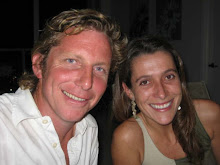
while in savu savu we decided to explore the island of vanua levu by bus. this was a good idea only to the way to labasa. after that town, it was not the greatest of plans. labasa is a crowded town in the north of the island where most of the Indian population lives. historically, this is where the indians were brought to work in the sugar cane plantations. the sugar cane still exist and according to our 1992 guide it is the major economic activity of this island. we have never been to India but being in this town made us feel as if we were there and certainly not in fiji. they have maintained their culture and do not mix with the local fijians. they dress to their traditions, listen to their music, eat their very spicy curries, etc…. seeing this mixture was interesting, however the town was not the best of places.


i had the terrible idea of getting a cheap haircut in that town. it was dreadful. at the end i cried… maybe that is why i also did not fancy this city very much… coming back was hard. we took the same bus which did not seem to have other gears different that “first” and we went slowly back to savu savu sitting patiently on the wooden chairs with very little foam and breathing up all the fumes because the wind was faster than the bus itself…. then we did not feel so bad of our average boat speed of 5 knots per hour!
the landscapes however were wonderful.































